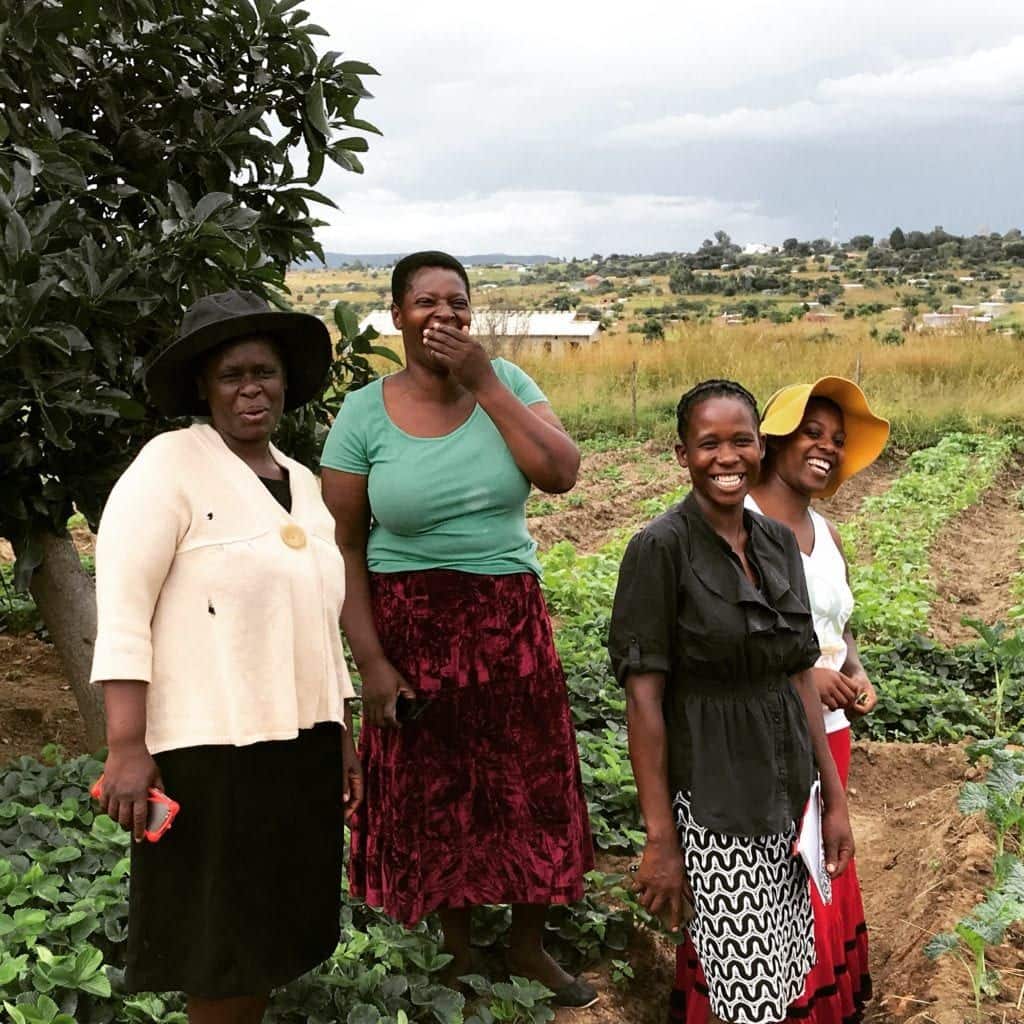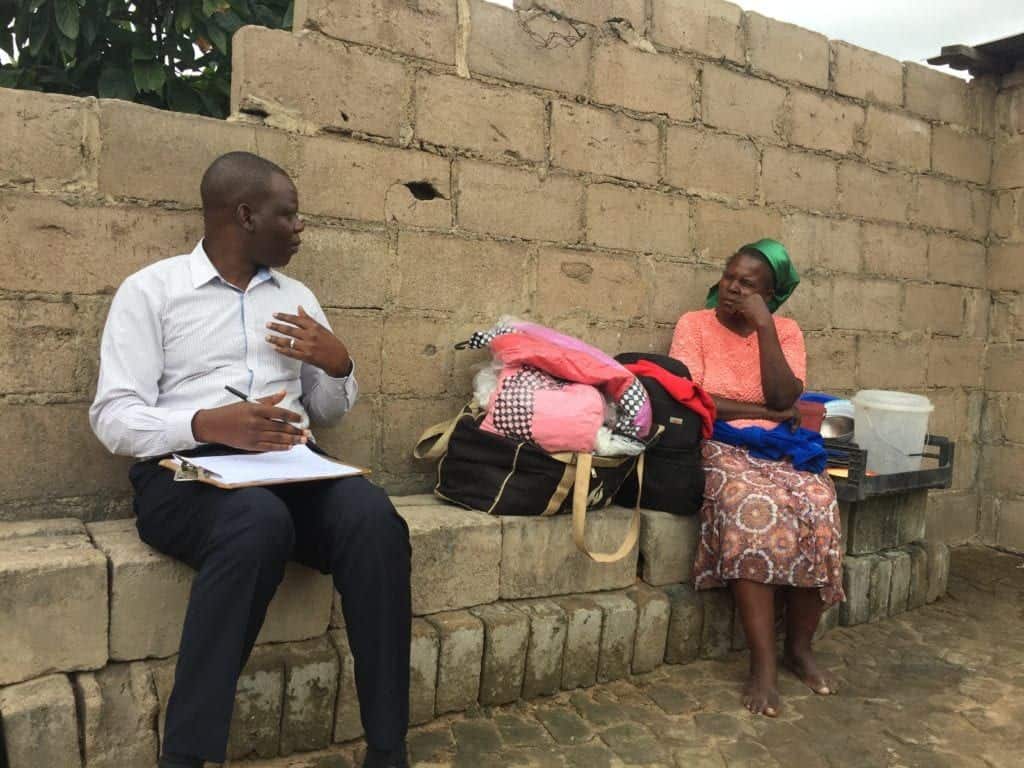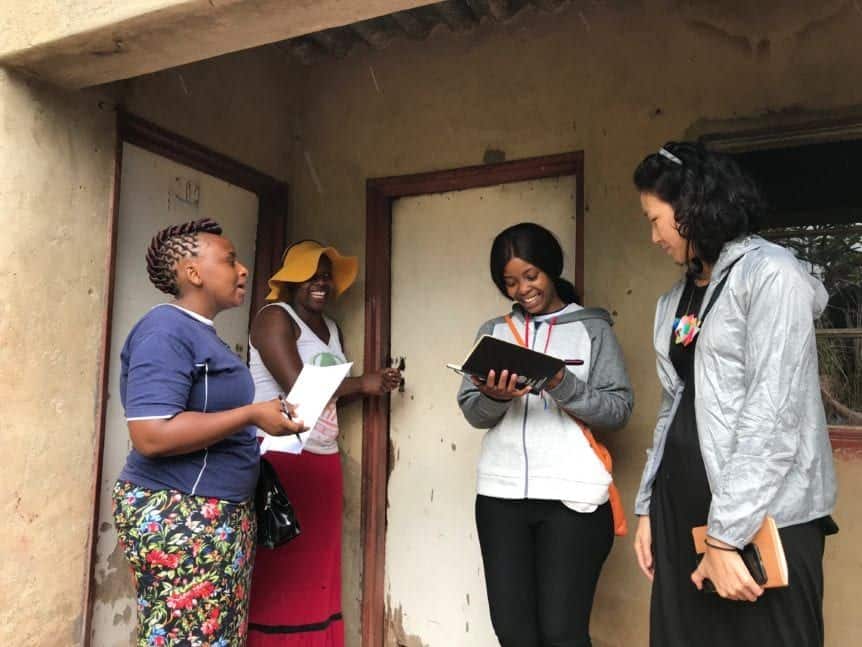A few months ago, I visited WPF partner Thrive Zimbabwe with Daniel Zoltani, Whole Planet Foundation’s Global Director of Programs. We met many micro-entrepreneurs who had taken loans from Thrive for their small businesses. Some grew mushrooms to sell in the market and to stores. Others traveled to South Africa and other neighboring countries to buy clothes, or housewares, or other products, to re-sell back in Zimbabwe. Another Thrive client ran a small grocery shop from the front of her house. Their businesses were diverse, but most told us about the same challenge: it was really hard to get cash.

A group of new borrowers who are neighbors and all farm mushrooms. We visited during the loan assessment. Photos by WPF’s Daniel Zoltani.
When we visited in April, Zimbabwe was in the midst of a cash shortage, and to get your hands on cash you often had to pay a premium. It cost a lot more than a dollar to get a dollar. There just wasn’t enough cash moving around. What does a cash shortage look like on the ground? Some of the microentrepreneurs we met shared their stories.
The Daily Reality of Cash Shortages
Although the official currency is the USD, you are more likely to get ahold of the government issued Zimbabwean bond note for your daily needs. The bond note is pegged to the dollar and officially backed by USD reserves, set at the rate of $1 bond note = 1 USD. But it trades at a much less favorable rate on the street in the parallel market – anywhere from 20 to 30% less. Day by day, transaction to transaction, supplier to supplier, the dollar to bond note rate could change.
For day to day use, especially in rural areas, the certainty and liquidity of hard currencies are preferred and sometimes the only accepted form of payment. Zimbabwe doesn’t produce a lot of goods domestically, and cross border trade is popular. Mobile money and the bond notes can’t be used outside Zimbabwe’s border. Small cross border traders pay highly unfavorable rates to get hard cash in exchangeable currencies like South African Rand and USD.
You might start queuing at the bank early in the morning to withdraw money from your account, money that you entrusted to the bank, then leave hours later with much less cash than you had asked for, or nothing at all. Some banks are said to cap individual daily withdrawals at the equivalent of $20 USD. As a benchmark, a small bottle of water costs roughly $0.68, a dozen eggs about $2, a basic meal at a restaurant about $5, and a bus ticket across country around $7.
Or you could go to a mobile money agent, ask to withdraw the amount in your account, and be charged up to 40% commission. The agents are supposed to honor the official exchange rate: $1 USD = 1 Zimbabwean bond note = 1 dollar in mobile money. But the street rate told a different story, and agents try to make up the difference in creative ways.
All of these steps: trying to get money from the bank or from Ecocash (a popular mobile money system), negotiating the fluctuating price of the bond note, converting bond notes to a recognized currency – come with extra uncertainties and costs.
For WPF partner Thrive Zimbabwe, the cash shortage in the market and at the bank means the best option is to manage the circulation of loans and repayments through the mobile money platform, despite the potential high costs. It was simply the only actionable option.

Thrive Zimbabwe staff (left) visiting borrowers at the Whitecliff branch to conduct a loan utilization check. The field officer confirms that the loan was used for the intended business shortly after the loan is disbursed. This client buys clothes from South Africa and re-sells them locally.
How did we get here?
The answer is complex. From the 1990s to 2008, Zimbabwe went through a period of rampant inflation. At peak hyperinflation, prices were almost doubling every day. The government had been responding to cash shortages and other challenges by printing notes with bigger and bigger denominations, like the infamous one hundred trillion dollar note. Hyperinflation rose due to a complex set of economic factors, including the government’s decision to print money when the budget deficit could no longer be funded by government borrowing.
The government decided to stabilize the economy by abolishing the Zimbabwean currency adopting a basket of currencies, of which the US dollars was dominant, as the official currency in 2009. This worked for a while, until in 2016 when there was a shortage of cash in the market. In 2017, the Zimbabwe government printed the Zimbabwe bond note, a currency meant to help with cash shortage issues. The act of printing more money to manage a cash shortage raised red flags of a return to the same cycle of inflation.
The uncertainty of introducing a new form of tender, which doesn’t have the protections and foundations of an official currency, caused additional shortages as people started hoarding their US dollars. The challenges and costs of getting cash from banks or through mobile money continues to contribute to more hoarding. Since then political and market uncertainties have continued: Robert Mugabe was ousted from power in November 2017 after 30 years in office, and elections took place at the end of July. The cash shortage continues. But many Zimbabweans see hope in the post- Mugabe administration’s push to make the country a more attractive investment destination.
At Whole Planet Foundation, we are often thinking about how money moves: between people, in local markets, within countries, and between countries. We try to understand these movements to gain insight into the obstacles to financial access micro-entrepreneurs and our partners face. Daniel and I spent one week in Zimbabwe, and every transaction came with a steep and often expensive traveler’s learning curve when it came to negotiating prices and payment forms. Even then, we had a lot of leverage with the USD in hard currency we brought into the country. It’s still hard for us to fully grasp how small businesses, who have so little leverage, manage to survive in Zimbabwe’s volatile market. But they somehow do, negotiating these complexities and still making a little income to help their families, and we were inspired by the resilience of the many business women we met.
Interested in learning more about this issue? – Check out this video from New York Times interviewing a street money changer.

